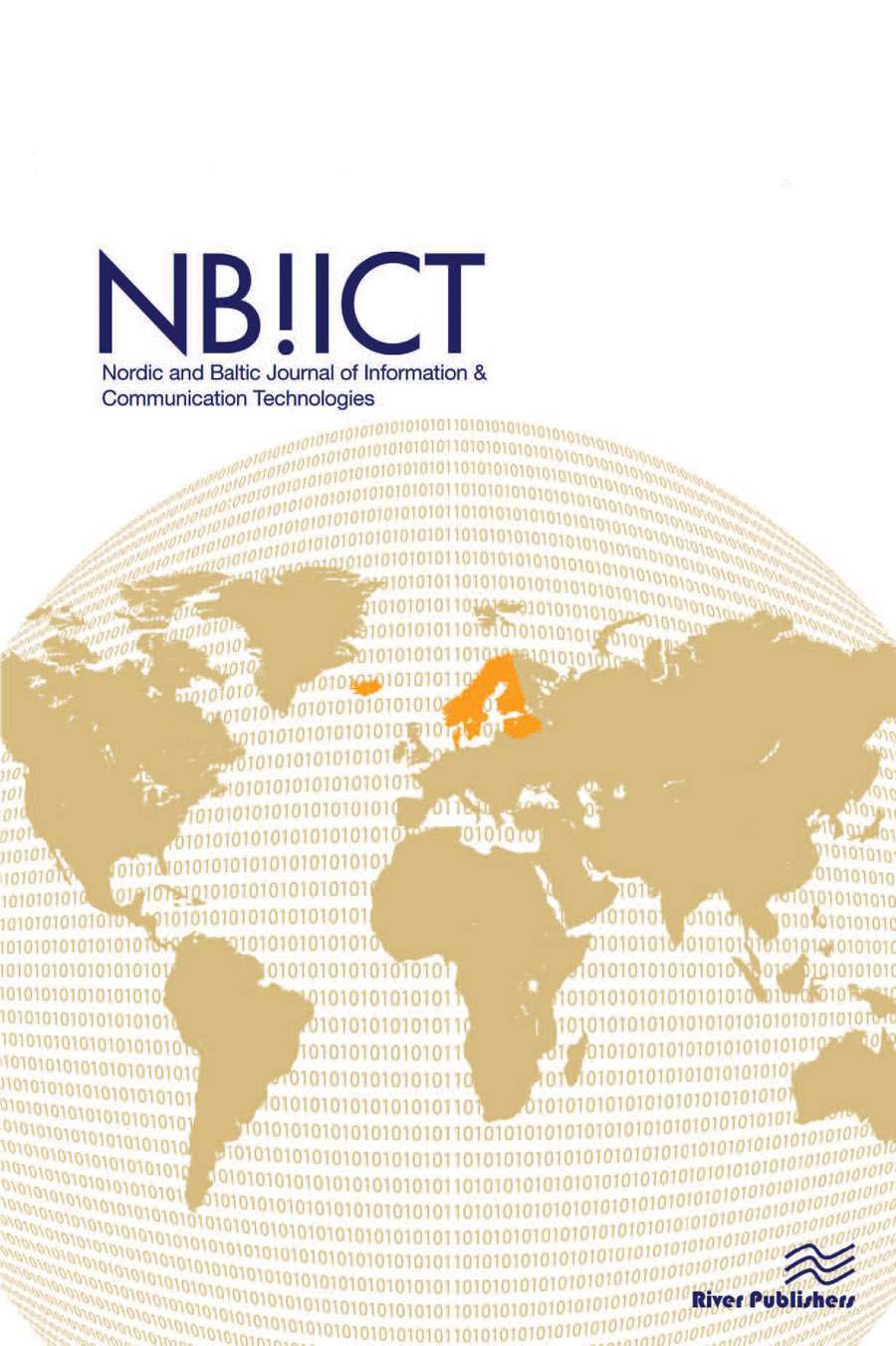Connected Stores, Connected Brands, Connected Consumers, Connected Goods: On Business Model Ecosystems in Internet of Packaging
DOI:
https://doi.org/10.13052/nbjict1902-097X.2020.004Keywords:
Internet of packaging, consumer experience, retail, business model innovation, business model ecosystemAbstract
This paper investigates and discusses roles, initiatives, and potentials for the business model ecosystem to enter business model innovation triggered by digital wireless technologies and capabilities of the Internet of Packaging-enabled smart interactive packaging. This paper develops an overview of the Internet of Packaging technology, wireless digital capabilities, business model innovation, and business model ecosystem in connection to the investigated phenomenon. In this paper, the digital transformation from passive to network-connected enhanced packaging is considered as an accelerator for business model innovation that creates and delivers the value proposition to a wide-ranging business model ecosystem including internal and external participants. Therefore, the governance of the overall business model ecosystem should efficiently reinforce each separate business model, as well as ensure safe and reliable data mobility in the IoP digital infrastructure regarding unique secure digital identifiers.
Downloads
References
W. Tafesse, ‘An experiential model of consumer engagement in social media’, Journal of Product & Brand Management, Vol. 25 Issue: 5, pp. 424–434, 2016.
D. J. Teece, ‘Business models, business strategy and innovation’, Long Range Planning, Vol. 43 Issue: 2–3, pp. 172–194, 2010.
A. Mumani, and R. Stone, ‘State of the art of user packaging interaction (UPI)’, Packaging Technology and Science, Vol. 31 Issue: 6, pp. 401–419, 2018.
H. Lindh, H. Williams, A. Olsson, and F. Wikström, ‘Elucidating the indirect contributions of packaging to sustainable development: A terminology of packaging functions and features’, Packaging Technology and Science, Vol. 29 Issue: 4–5, pp. 225–246, 2016.
H. E. Nilsson, T. Unander, J. Siden, H. Andersson, A. Manuilskiy, M. Hummelgard, and M. Gulliksson, ‘System integration of electronic functions in smart packaging applications’, IEEE Transactions on Components, Packaging and Manufacturing Technology, Vol. 2 Issue: 10, pp. 1723–1734, 2012.
T. Ryynänen, and E. Rusko, ‘Professionals’ view of consumers’ packaging interactions – a narrative analysis’, Packaging Technology and Science, Vol. 28 Issue: 4, pp. 341–355, 2015.
A. Gawer, and M. A. Cusumano, ‘Industry platforms and ecosystem innovation’, Journal of Product Innovation Management, Vol. 31 Issue: 3, pp. 417–433, 2014.
O. Mazhelis, E. Luoma, and H. Warma, ‘Defining an internet-of-things ecosystem’, In Internet of Things, Smart Spaces, and Next Generation Networking, pp. 1–14, Springer, Berlin, 2012.
Y. Yoo, O. Henfridsson, and K. Lyytinen, ‘Research commentary – The new organizing logic of digital innovation: An agenda for information systems research’, Information Systems Research, Vol. 21 Issue: 4, pp. 724–735, 2010.
A. Eck, F. Uebernickel, and W. Brenner, ‘The generative capacity of digital artifacts: A mapping of the field’, Association for Information Systems, 2015.
J. Kallinikos, A. Aaltonen, and A. Marton, ‘The ambivalent ontology of digital artifacts’, MIS Quarterly, Vol. 37 Issue: 2, pp. 357–370, 2013.
N. Wang, and W. Wu, ‘The architecture analysis of internet of things’, In International Conference on Computer and Computing Technologies in Agriculture, pp. 193–198, Springer, Berlin, 2011.
E. Loucanova, M. Kalamarova, and J. Parobek, ‘The innovative approaches to packaging - Comparison analysis of intelligent and active packaging perceptions in Slovakia’, Studia Universitatis “Vasile Goldis” Arad-Economics Series, Vol. 27 Issue: 2, pp. 33–44, 2017.
D. Bandyopadhyay, and J. Sen, ‘Internet of things: Applications and challenges in technology and standardization’, Wireless Personal Communications, Vol. 58 Issue: 1, pp. 49–69, 2011.
H. Luo, M. Zhu, S. Ye, H. Hou, Y. Chen, and L. Bulysheva, ‘An intelligent tracking system based on internet of things for the cold chain’, Internet Research, Vol. 26 Issue: 2, pp. 435–445, 2016.
J. Shen, B. N. Majid, L. Xie, J. Mao, Z. Pang, Y. Feng, ... and L. Zheng, ‘Interactive UHF/UWB RFID tag for mass customization’, Information Systems Frontiers, Vol. 19 Issue: 5, pp. 1177–1190, 2017.
E. Sipilä, J. Virkki, J. Wang, L. Sydänheimo, and L. Ukkonen, ‘Brush-painting and photonic sintering of copper oxide and silver inks on wood and cardboard substrates to form antennas for UHF RFID tags’, International Journal of Antennas and Propagation, p. 8, 2016.
D. Pigini, and M. Conti, ‘NFC-based traceability in the food chain’, Sustainability, Vol. 9 Issue: 10, p. 20, 2017.
Y. Wyser, M. Adams, M. Avella, D. Carlander, L. Garcia, G. Pieper, ... and J. Weiss, ‘Outlook and challenges of nanotechnologies for food packaging’, Packaging Technology and Science, Vol. 29 Issue: 12, pp. 615–648, 2016.
A. Osterwalder, Y. Pigneur, and C. L. Tucci, ‘Clarifying business models: Origins, present, and future of the concept’, Communications of the Association for Information Systems, Vol. 16 Issue: 1, pp. 1–25, 2005.
C. Baden-Fuller, and V. Mangematin, ‘Business models: A challenging agenda’, Strategic Organization, Vol. 11 Issue: 4, pp. 418–427, 2013.
H. Chesbrough, ‘Business model innovation: Opportunities and barriers’, Long Range Planning, Vol. 43 Issue: 2–3, pp. 354–363, 2010.
J. Kim, ‘The platform business model and business ecosystem: Quality management and revenue structures’, European Planning Studies, Vol. 24 Issue: 12, pp. 2113–2132, 2016.
N. Mlalila, D. M. Kadam, H. Swai, and A. Hilonga, ‘Transformation of food packaging from passive to innovative via nanotechnology: Concepts and critiques’, Journal of Food Science and Technology, Vol. 53 Issue: 9, pp. 3395–3407, 2016.
N. Kshetri, ‘Can blockchain strengthen the internet of things?’, IT Professional, Vol. 19 Issue: 4, pp. 68–72, 2017.


